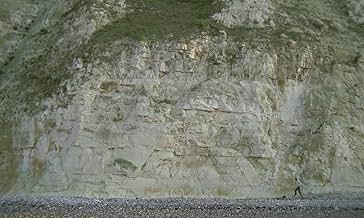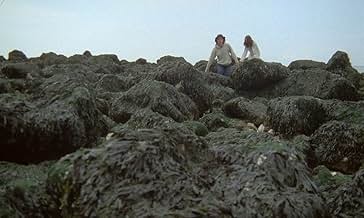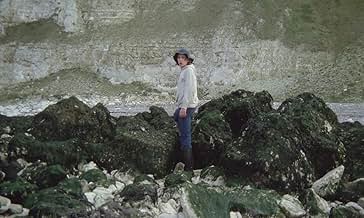IMDb-BEWERTUNG
5,6/10
6154
IHRE BEWERTUNG
Eine erotische Sammlung von Kurzgeschichten, eine Anthologie aus verlockenden Geschichten über das sexuelle Verlangen und seine vielfältigen Erscheinungsformen.Eine erotische Sammlung von Kurzgeschichten, eine Anthologie aus verlockenden Geschichten über das sexuelle Verlangen und seine vielfältigen Erscheinungsformen.Eine erotische Sammlung von Kurzgeschichten, eine Anthologie aus verlockenden Geschichten über das sexuelle Verlangen und seine vielfältigen Erscheinungsformen.
- Regie
- Drehbuch
- Hauptbesetzung
Tomas Hnevsa
- (segment "Lucrezia Borgia")
- (as Thomas Hnevsa)
Florence Dauman
- Hungarian Girl (segment "Erzsébet Báthory")
- (Nicht genannt)
Sirpa Lane
- Romilda (segment "La Bête")
- (Nicht genannt)
Empfohlene Bewertungen
Okay, okay... 1974. The Europeans have figured out that a world-wide audience exists for films that portray full-frontal nudity, regardless of storyline or context. Borowczyk has chosen four stories from four eras to flaunt some skin... the 1970s right back to the 1400s. He takes the cake, however, with the third segment, featuring Pablo's daughter Paloma Picasso: she plays a countess in the 1700s bent on preserving her youth and vitality by bathing in the blood of virgins. To get this far, we are treated to the most incredible series of visuals ever filmed! At least thirty young, beautiful, and (gasp!) very naked women are brought forward to shower, cavort, pray, play with each other, and perform some sort of ritual that leads to their demise. You will watch the whole film, but you will come away remembering only this third segment. All the nudity aside, credit Borowczyk and crew for doing a fine job technically and photographically on this film. Definitely worth seeing.
Art or pornography? Well, if it's pornography certainly no pornographer in cinema as come as close to art as Borowczyk does here. The five "Immoral Tales" that make up this movie deal exclusively with sex in its various forms with a great emphasis on female nudity. Borowczyk deals with an almost fetishistic relish on the woman's body while almost totally ignoring the man's. With the exception of the first story, 'The Tide', the others are all taken from history or the past. We get St. Therese, she who was raped rather than give up her virginity; Elisabeth Bathory, she who liked to bathe, so they say, in the blood of virgins and Lucrezia Borgia, who apparently liked it whatever way she could get it. We also get a mini version of what became "The Beast" whose engorged phallus is one of the very few 'male' organs we see.
Visually the film's palette changes to suit the story at hand and this is very much a sex movie for the intelligentsia, which isn't to say that the 'dirty mac' brigade won't have a field day as well. Of course, since "Immoral Tales" first appeared movies have become a lot more sexually explicit and yet I happy to say this is a movie that can still provoke outrage today...of one kind or another.
Visually the film's palette changes to suit the story at hand and this is very much a sex movie for the intelligentsia, which isn't to say that the 'dirty mac' brigade won't have a field day as well. Of course, since "Immoral Tales" first appeared movies have become a lot more sexually explicit and yet I happy to say this is a movie that can still provoke outrage today...of one kind or another.
Interesting exploration on erotism, that tell four tales of 'immoralities', casually plenties of sex. However, it is interesting the focus on the corruption of governors and religious people. And visually is very well-done. I think that it has no dialogue at all. Interesting. How it could be better? Well, there are a lot of naked women, but i think that some women of a potential public would be interested in more naked men. Who knows? 7/10
Contes Immoraux/Immoral Tales(1974) is an erotic series of short films that opens with "The Tide". This first tale is about a young girl who is taught by her cousin about the connection between sex and the highest peak of a water wave. The story is average and is the least interesting. This tale is about how sex and intellectual thinking can go hand to hand. About how sex and the idea of sexual contact is thought up by the middle class.
The second tale in the film is one of the two best tales in this sensual anthology. Its about a sexually repressed young woman that discovers her urges through her religion beliefs. Charlotte Alexandra who plays the sex hungry woman is excellent in the role as well as absolutely breathtaking and arousing. She finds her sexual pleasure through fantasies of sex and self sex using vegetables. The story is about a woman's yearning to be independant and feminine.
The tale telling of the Countess Elisabeth Bathory is the best story. It takes place during the final hours of the countess before her arrest at the orders of the king. The story takes a shot at the government structure by showing its self indulgence and absolute corruption. Elisabeth Bathory was not a vampire in the traditional sense. First, she was still alive and did not suck blood. Paloma Picasso, daughter of the fame artist is wonderful in the role of the infamous countess(interestingly, when she is arrested the kings men put a suit on her that reminds me of the prisoner's arrest suit in Brazil).
The next and final tale is about one of the most scandalous moments in the 20th Century. It features a shocking menage a trois that is very bold to view. The story is about the love affair between Lucrezia Borgia and her father, the pope plus another man. The sex sequences are disturbing and shocking. This story is very powerful in its depiction of religious corruption.
The second tale in the film is one of the two best tales in this sensual anthology. Its about a sexually repressed young woman that discovers her urges through her religion beliefs. Charlotte Alexandra who plays the sex hungry woman is excellent in the role as well as absolutely breathtaking and arousing. She finds her sexual pleasure through fantasies of sex and self sex using vegetables. The story is about a woman's yearning to be independant and feminine.
The tale telling of the Countess Elisabeth Bathory is the best story. It takes place during the final hours of the countess before her arrest at the orders of the king. The story takes a shot at the government structure by showing its self indulgence and absolute corruption. Elisabeth Bathory was not a vampire in the traditional sense. First, she was still alive and did not suck blood. Paloma Picasso, daughter of the fame artist is wonderful in the role of the infamous countess(interestingly, when she is arrested the kings men put a suit on her that reminds me of the prisoner's arrest suit in Brazil).
The next and final tale is about one of the most scandalous moments in the 20th Century. It features a shocking menage a trois that is very bold to view. The story is about the love affair between Lucrezia Borgia and her father, the pope plus another man. The sex sequences are disturbing and shocking. This story is very powerful in its depiction of religious corruption.
In the spirit of "I'll try anything once", I watched my first Walerian Borowczyk film; it is also probably going to be my last. His brand of pseudo-arty, antiseptic, plotless soft-core porn is totally not my cup of tea (besides, we already have Jess Franco for that). The first story is the best, because it's at least the most honest; the worst is probably the third, in which the shower scenes go on for what seems like three centuries. * out of 4.
Wusstest du schon
- WissenswertesThe original version screened in 1974 was made up of five, not four episodes. Borowczyk removed one episode, 'The True Story of the Beast of Gevaudan', and expanded it to feature length as Das Biest (1975). In 2010, a print of the original short film of 'The True Story of the Beast of Gevaudan' was discovered in a French archive. The uncut version was shown at New Horizons Film Festival in Poland on 24th of July 2013, and subsequeny included on the 2014 Arrow Blu-ray release.
- Crazy CreditsThe film opens with this quote:
"L'amour, tout agréable qu'il est, plaìt encore plus par le maniéres dont il se montre que par lui-méme." La Rochefoucauld (Maximes)
- Alternative VersionenAs indicated in the trivia section, the original version screened in 1974 was made up of five, not four episodes, running at 2h 5m. Borowczyk removed one episode, 'The True Story of the Beast of Gevaudan / La Bête', and expanded it to feature length as La bête (1975). In 2010, a print of the original short film of 'La Bête' was discovered in a French archive. The uncut version was shown at New Horizons Film Festival in Poland on 24th of July 2013, and subsequently included on the 2014 Arrow Blu-ray release.
- VerbindungenEdited into Das Biest (1975)
Top-Auswahl
Melde dich zum Bewerten an und greife auf die Watchlist für personalisierte Empfehlungen zu.
- How long is Immoral Tales?Powered by Alexa
Details
- Laufzeit
- 2 Std. 5 Min.(125 min)
- Sound-Mix
- Seitenverhältnis
- 1.66 : 1
Zu dieser Seite beitragen
Bearbeitung vorschlagen oder fehlenden Inhalt hinzufügen













